Mechanical ventilation design prospect NS refers to the planning, implementation, and regulatory compliance of controlled ventilation systems in Nova Scotia homes and buildings. Here's what you need to know:
Quick Answer: What is Mechanical Ventilation Design in Nova Scotia?
You've probably heard the phrase "homes need to breathe." It's true, but not in the way you might think.
To combat rising energy costs and Nova Scotia's harsh climate, modern homes are built to be incredibly airtight. While this is great for your heating bill, it's terrible for indoor air quality without proper ventilation. Without fresh air exchange, moisture builds up, mold grows, and allergens and pollutants get trapped inside with nowhere to go.
That's where mechanical ventilation comes in. Unlike cracking a window (which wastes energy), systems like HRVs and ERVs bring in fresh outdoor air while recovering heat from the stale air going out. It's smart, efficient, and increasingly required by building codes across the province.
This guide will walk you through Nova Scotia's mechanical ventilation design regulations, explain why they exist, and help you understand what a proper system looks like—whether you're building new, renovating, or improving your home's air quality.
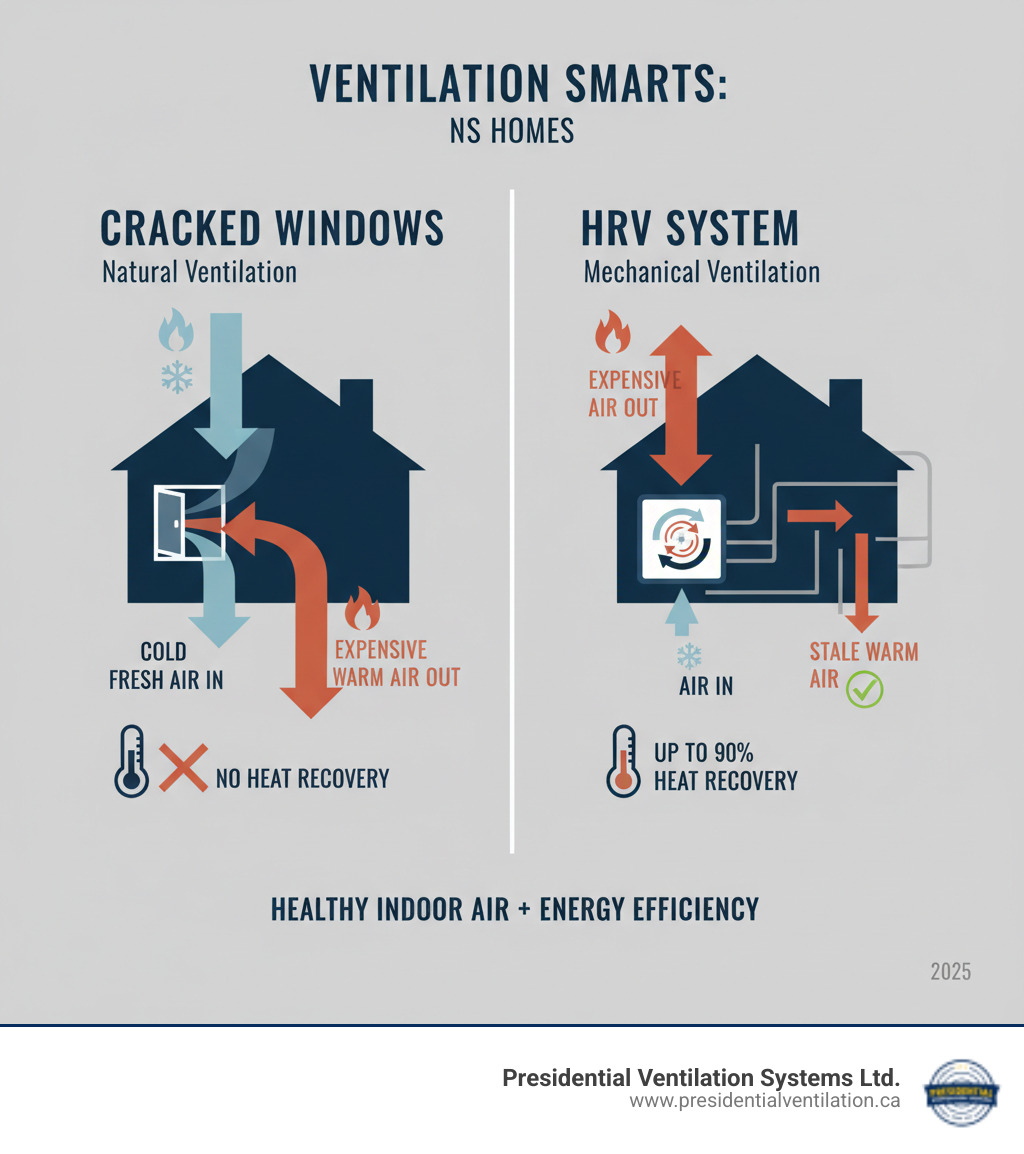
Let's talk about why mechanical ventilation design prospect NS has become so critical. It's not just about ticking boxes on building permits—it's about protecting your family's health, your home's structure, and your energy bills.
Modern homes are built to be extremely tight to keep heat in during our long winters and cool air in during humid summers. The catch? A sealed home traps everything inside: moisture, cooking odors, allergens, and chemical vapors (VOCs). The Nova Scotia Building Code, following the National Building Code of Canada (NBCC), recognized this problem and now requires mechanical ventilation in new construction. This ensures healthy indoor air from day one.
Unlike old, drafty homes that lost huge amounts of energy, modern ventilation systems like HRVs and ERVs are highly efficient. They recover energy from the outgoing stale air and transfer it to the incoming fresh air. You get continuous fresh air without the high energy penalty, dramatically reducing heating and cooling costs.
Nova Scotia is humid. In an airtight home, moisture from cooking, showering, and even breathing has nowhere to go. It condenses on cold surfaces like windows, leading to peeling paint, rotting frames, and mold growth. A well-designed mechanical ventilation system actively removes this excess moisture before it can cause damage, preventing condensation by continuously exchanging humid indoor air for drier outdoor air.
Your home can trap allergens like dust mites, pet dander, and pollen, making symptoms worse for allergy sufferers. Mechanical ventilation helps by constantly flushing out these airborne irritants and replacing them with filtered fresh air. This continuous air turnover can significantly reduce allergen concentrations.
Additionally, parts of Nova Scotia have liftd levels of radon, a naturally occurring radioactive gas and a leading cause of lung cancer. In an airtight home, radon can accumulate to dangerous levels. Mechanical ventilation provides consistent air changes that dilute and exhaust radon, protecting your family from this invisible health risk.
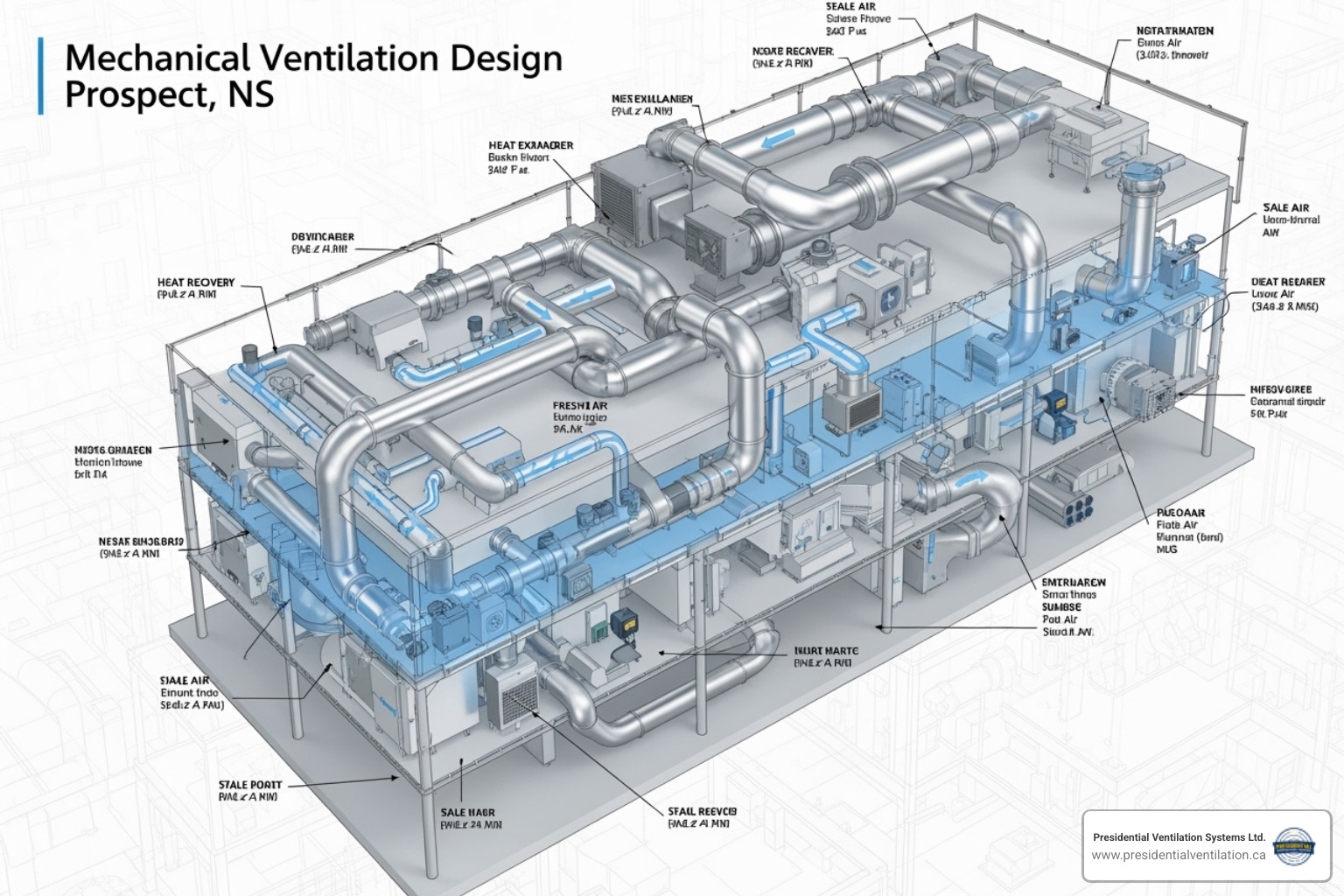
A properly designed system is an investment in your family's health, your home's durability, and your long-term comfort. For more details, explore our HRV System Benefits.
When discussing mechanical ventilation design prospect NS, we're usually talking about two systems: Heat Recovery Ventilators (HRVs) and Energy Recovery Ventilators (ERVs). Both exhaust stale indoor air while bringing in fresh outdoor air, using a heat exchange core to transfer energy.
The key difference is moisture. HRVs transfer heat only, which helps reduce indoor humidity in the winter. ERVs transfer both heat and moisture. This is crucial for Nova Scotia's humid summers, as an ERV can remove moisture from the incoming air, helping to dehumidify your home. Given our climate, ERVs are often the preferred choice for year-round comfort.
Designing and installing a mechanical ventilation system in Nova Scotia requires navigating a framework of regulations. These rules ensure systems are safe, effective, and deliver healthy indoor air. When we talk about mechanical ventilation design prospect NS, we're talking about creating systems that meet both the letter and the spirit of the law.
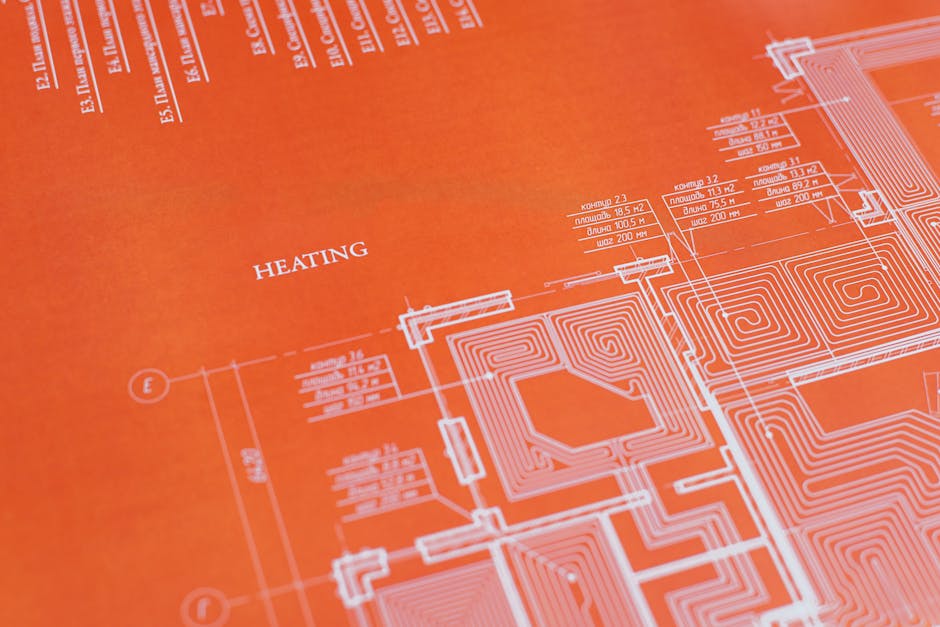
These standards are guardrails that protect homeowners from poor design and ensure contractors deliver quality work.
Compliance isn't just about paperwork; it protects your health, home, and wallet. A code-compliant system prevents the buildup of harmful gases and pollutants, controls moisture to stop mold and rot, and operates efficiently to save energy. Furthermore, most manufacturer warranties require professional, code-compliant installation. Cutting corners can void your warranty and lead to costly repairs.
Getting mechanical ventilation design prospect NS right means focusing on the details. It's about creating a complete system that works seamlessly with your home.
Our HRV Installation Halifax Guide 2025 dives deeper into these design elements.
Commercial systems operate on a much larger scale. Key differences include:
For a comprehensive look, see our Commercial Ventilation Halifax Ultimate Guide.
The world of mechanical ventilation design prospect ns is constantly evolving with new technology for smarter, more efficient systems. If you're building or upgrading, these innovations are worth knowing about.

Modern ventilation systems are becoming intelligent, adjusting automatically to your home's needs. Demand-controlled ventilation (DCV) uses sensors to monitor conditions and respond in real-time. For example, CO2 sensors detect when a room is occupied and increase airflow, then dial it back to save energy when the room is empty.
Smart home integration allows you to control your system via a smartphone app or voice assistant, setting schedules that match your routine. We're also seeing more accessible advanced HEPA filtration, which captures ultrafine particles, bacteria, and viruses, offering superior protection for those with respiratory concerns. These smart systems can also improve acoustic comfort by running at quieter speeds when needed, ensuring better sleep without sacrificing air quality.
High-performance building standards like net-zero homes and Passive House rely on two key elements: exceptional insulation and incredibly efficient mechanical ventilation. These homes are so airtight that an HRV or ERV is not just an add-on; it's a core component for achieving their energy targets.
ECM motors (Electronically Commutated Motors) are now standard in quality ventilation equipment. They use significantly less electricity than older motors, running more quietly and saving you money on utility bills. This focus on efficiency is a key part of sustainable design, helping reduce our collective carbon footprint.
Even the most advanced system needs regular care to run well. Think of it like your car—it needs tune-ups to maintain performance.
Regular maintenance ensures your system delivers fresh, healthy air efficiently for years to come. For more details, check out our guide on HRV Duct Cleaning.
We talk to homeowners across Nova Scotia every day about mechanical ventilation design prospect NS. Here are answers to the most common questions.
Yes, it's still highly recommended. Drafts are uncontrolled, unfiltered, and unreliable. They let in pollen, dust, and exhaust without guaranteeing fresh air reaches the rooms where you need it. Meanwhile, moisture still builds up in bathrooms and kitchens, leading to localized mold and musty odors.
Mechanical ventilation gives you control. A bathroom exhaust fan removes moisture at the source. A kitchen hood vents cooking odors outside. An HRV or ERV provides a constant supply of filtered, fresh air to your living spaces while removing stale, humid air from problem areas. It provides consistent, predictable air exchange that improves comfort and protects your home, regardless of how airtight it is.
The short answer is continuously. Modern HRVs and ERVs with efficient ECM motors are designed for 24/7 operation. This maintains a steady supply of fresh air and keeps humidity levels stable, preventing pollutants from accumulating. Think of it like your refrigerator—it runs constantly but efficiently to do its job.
Many systems have automatic controls that adjust fan speed based on humidity or outdoor temperature, so it's not always running at full blast. There are also boost modes for when you need extra ventilation, like after painting or hosting a party. The baseline, however, should be continuous, low-level operation for optimal air quality.
While we admire the DIY spirit, this is a job for professionals. Proper installation requires a deep understanding of building codes (NBCC, CSA F326), airflow calculations, ductwork design, and system balancing. An improperly installed system can fail inspection, void the manufacturer's warranty, and even worsen your indoor air quality by creating pressure imbalances or pulling in contaminated air.
We've seen DIY jobs that caused backdrafting from furnaces or recycled stale air instead of exhausting it. Professional installation ensures your system is sized correctly, integrated properly, and optimized for Nova Scotia's climate. Our team at Presidential Ventilation Systems Ltd. has over 30 years of experience getting it right the first time. For comprehensive support, explore our HVAC Services Halifax HRM NS offerings.
We've covered the essentials of mechanical ventilation design prospect NS, from why it's needed to the regulations that govern it. The takeaway is clear: modern, airtight homes in Nova Scotia's climate require mechanical ventilation to protect against moisture damage and ensure healthy indoor air.
Systems like HRVs and ERVs are required by code for good reason. They keep your air fresh while recovering energy that would otherwise be wasted. Innovations like smart controls and advanced filtration are making these systems more effective and efficient than ever.
However, even the best equipment will fail if it's not designed and installed by a professional. Proper sizing, ductwork design, and system balancing are critical steps that require expertise. This is not a DIY project—your family's health and your home's integrity are on the line.
At Presidential Ventilation Systems Ltd., we have over 30 years of experience designing and installing ventilation systems across Nova Scotia, including Halifax, Dartmouth, Bedford, and the surrounding areas. Our certified professionals ensure your system is compliant, efficient, and perfectly suited to your home.
Ready to improve your home's air quality? Explore our expert HRV Systems solutions and let us help you create a healthier, more comfortable home environment.


If you're dealing with hrv systems broken in ellershouse ns, you might notice stuffy air, excess moisture, or strange noises from your ventilation unit. Heat Recovery Ventilators (HRVs) are essential in Nova Scotia's climate. They exhaust stale indoor air while supplying fresh, filtered outdoor air, using a core heat exchanger to transfer heat from the outgoing air to the incoming air. This process keeps your home healthy and energy-efficient, maintaining good air quality and reducing heating costs without wasting warmth. HRVs also help control humidity, preventing condensation and mold.
Quick Solutions for a Broken HRV:
For comprehensive guidance on ventilation systems, explore our HVAC services overview, or if you need immediate professional assistance, schedule a service appointment with our team.
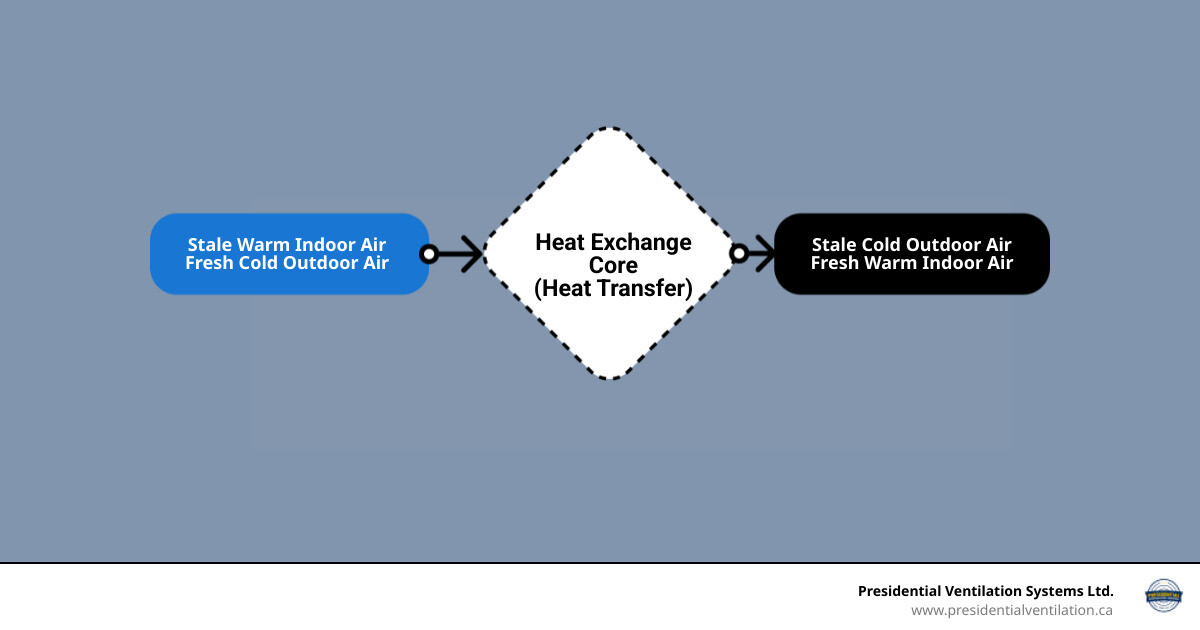
Stuffy air, musty smells, or excessive window condensation are your home's way of telling you that your HRV system might be struggling. Recognizing the warning signs of hrv systems broken in ellershouse ns early can save you from bigger problems and repair bills down the road.

Here are some common signs of a malfunctioning HRV:
Understanding your HRV's parts helps you identify problems:
Some issues can be fixed with basic maintenance, while others require professional help, like the services provided by our experienced technicians for Air Exchanger Services Dartmouth and the surrounding areas.
When you suspect your hrv systems broken in ellershouse ns, don't immediately call for service. Many common HRV issues are simple to fix yourself. With a little patience, you can often get your system running again.
Safety first: Before touching anything inside the unit, always turn off the power at both the unit's switch and the corresponding circuit breaker in your electrical panel. This simple step prevents serious injury.

Regular maintenance prevents breakdowns and keeps your air fresh. Here’s a simple schedule:
If your HRV is acting up, follow these troubleshooting steps before calling for help:
If you've tried these steps and your HRV still isn't working, it's time to call for professional help. Our Air Exchanger Installation Dartmouth Guide offers more insight into how these systems should operate.
While DIY maintenance is valuable, some issues require a professional's expertise. Knowing when to call an expert can prevent further damage and ensure your home's air quality is restored safely and promptly.
If you've completed the DIY troubleshooting steps and your hrv systems broken in ellershouse ns still isn't working, it's time to call us. Other clear signs you need a professional include:

A qualified technician provides critical services that go beyond basic repairs:
Our team is equipped to handle the full range of HRV repairs:
Homeowners across Ellershouse NS often have questions about their ventilation systems. Here are answers to some of the most common ones.
Both systems ventilate your home while recovering energy, but they differ in how they handle moisture. An HRV (Heat Recovery Ventilator) transfers only heat, which is ideal for the long heating season in Ellershouse. It uses heat from stale outgoing air to warm up fresh incoming air.
An ERV (Energy Recovery Ventilator) transfers both heat and moisture. This can help prevent excessive dryness in the winter and reduce humidity in the summer. Depending on your home's specific conditions, an ERV might be a better fit. Our team can assess your needs and recommend the right system. You can learn more from our insights on Energy Recovery Ventilation Halifax NS.
We recommend professional servicing once a year, ideally in the fall before the heating season begins. While your DIY filter cleaning is crucial, an annual service is far more comprehensive. A technician will inspect all internal components, balance the system's airflow, test controls and sensors, and clean parts you can't easily access. This preventative maintenance improves efficiency, prevents costly breakdowns, and is often required to keep your manufacturer's warranty valid.
If your HRV isn't performing as expected, there are several possible causes. When dealing with hrv systems broken in ellershouse ns that seem to run without effect, check these common issues:
If you've checked these factors and your home is still uncomfortable, it's time to call us. We can diagnose the exact issue and get your indoor air back on track.
Dealing with hrv systems broken in ellershouse ns can be frustrating, but you are now equipped with the knowledge to handle many common problems. Your HRV is vital for a healthy, energy-efficient home in our Nova Scotia climate, providing fresh air and controlling humidity.
Regular maintenance like cleaning filters every three months, checking outdoor hoods for blockages, and clearing the condensate drain is your first line of defense. These simple tasks can prevent most common issues and keep your system running efficiently.
However, it's important to know your limits. For electrical problems, persistent mechanical noises, or any issue that remains after basic troubleshooting, it is safest and smartest to call a professional. Attempting complex repairs without proper training can be dangerous and may cause more damage.
At Presidential Ventilation Systems Ltd., our qualified technicians have over 30 years of experience helping homeowners throughout Nova Scotia. We provide expert diagnostics and repairs to ensure your system runs safely and efficiently, restoring your home's comfort and air quality.
Don't let a malfunctioning ventilation system compromise your family's health. For expert diagnostics and repair of your ventilation system, trust the professionals. Learn more about our HRV Systems and find out how we can help.
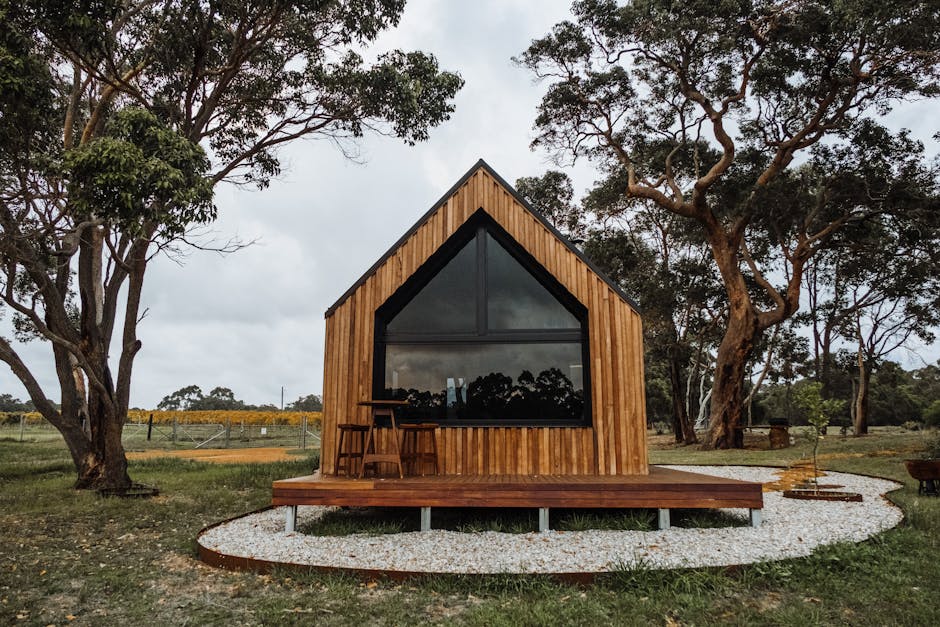

When hrv systems broken in berwick ns become a problem, homeowners quickly notice the difference in their indoor air quality and comfort. Heat Recovery Ventilators are essential for maintaining fresh, healthy air in the Annapolis Valley's cold, damp climate, but like any mechanical system, they can malfunction. If you're dealing with excess humidity, musty odors, unusual noises, or poor air circulation, you likely need professional HRV repair services in Berwick.
Quick Solutions for Broken HRV Systems in Berwick, NS:
For more information on common issues, visit our guide on Understanding and Solving Common Heat Recovery Ventilator (HRV) Issues. When you need expert repair, contact Presidential Ventilation Systems Ltd. for fast, reliable service throughout the Annapolis Valley.
Your HRV system works hard to exchange stale indoor air with fresh outdoor air while recovering heat to keep your energy bills down. In Berwick's climate, where winters are cold and damp, a properly functioning HRV prevents mold growth, manages humidity levels, and ensures your family breathes clean air. When these systems break down, the effects are immediate—condensation on windows, stale air, and increased allergens become daily frustrations.

A Heat Recovery Ventilator (HRV) is truly a marvel of modern home comfort. It's designed to continuously bring fresh outdoor air into your home while expelling stale indoor air. The magic happens within its heat exchange core, where heat from the outgoing air is transferred to the incoming fresh air. This process ensures that you get the benefits of fresh air without losing all the warmth you've paid for, making your home more energy-efficient and comfortable.
In tightly sealed, modern homes, which are built to be airtight to reduce heat loss, an HRV is not just a luxury—it's a necessity. Without proper ventilation, indoor pollutants, allergens, and excess humidity can build up, leading to poor indoor air quality, health issues, and even structural damage like mold growth. Our HRVs ensure a balanced flow of air, helping to maintain optimal humidity levels and filter out unwanted particles, delivering fresh, efficient, balanced air for healthy living.
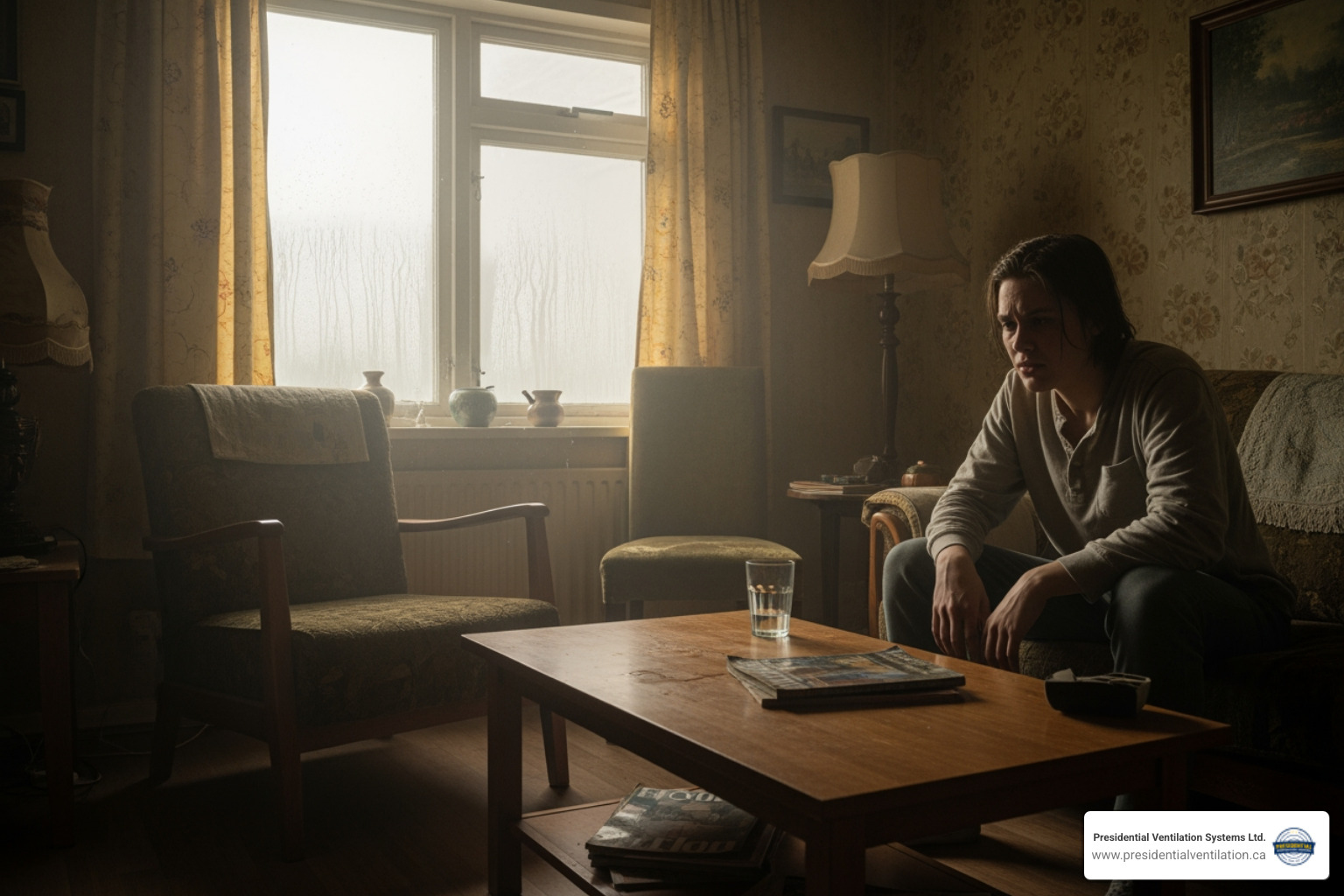
When your HRV system starts to fail, the signs are usually clear—you just need to know what to look for. Catching problems early can save you from bigger headaches and repair bills down the road.
Condensation on your windows is often the first clue. In Berwick's damp winters, your HRV should manage indoor humidity. If you see persistent condensation or feel sticky air, your system isn't extracting moisture as it should. This creates the perfect environment for mold and mildew.
Unusual noises are another telltale sign. A healthy HRV hums quietly, but rattling, buzzing, or grinding sounds indicate a problem. These noises often point to a failing motor, loose components, or a blocked fan.
Poor air circulation makes your home feel stuffy. If certain rooms feel stale or you notice weak airflow from your vents, your HRV might not be exchanging air effectively. This could be due to blockages or a fan that's wearing out.
When musty odors appear, especially around vents, it's time to act. That smell is often a sign your system isn't properly removing moisture and airborne contaminants. In some cases, you might even spot visible mold—a clear indication that your hrv systems broken in berwick ns need professional attention.
Worsening allergies or respiratory issues can also signal a problem. If your family is coughing more or experiencing increased allergy symptoms, poor indoor air quality from an underperforming HRV could be the culprit. The system's filters might be clogged, allowing allergens to circulate through your home.
Keep an eye on your energy bills. When an HRV isn't working efficiently, it forces your heating system to work overtime. This happens because the HRV isn't recovering heat effectively or is struggling to move air, leading to a spike in your energy consumption.
If you're experiencing any of these warning signs, don't wait. Learn more about Understanding and Solving Common Heat Recovery Ventilator (HRV) Issues and find the importance of a well-functioning system by checking out our insights on HRV System Benefits. Taking action sooner rather than later will protect your home and family.
Many issues with hrv systems broken in berwick ns are surprisingly simple to fix yourself. Understanding these common problems can save you time and help you maintain your system.
The usual suspects are straightforward. Clogged filters, blocked exterior vents, and ice build-up are frequent culprits, especially in our cold Berwick winters. Deeper issues can include a faulty fan motor, sensor malfunctions, or drainage problems.
Before calling a professional, try these simple checks that often solve the problem:
Check and Clean Your Filters: Clogged filters are the most common cause of HRV failure. Access the filters (usually no tools required) and check them every one to three months. Many are washable with warm, soapy water; just let them dry completely before reinstalling.
Inspect Outdoor Vents: Take a walk outside and clear any leaves, snow, ice, or debris from your intake and exhaust vents. A simple blockage can shut down your entire system.
Examine the Condensate Drain: Find the small plastic drainage tube and ensure it’s not clogged or frozen. You can often clear a minor clog by gently squeezing the hose or flushing it with warm water.
Reset the Unit: Like a computer, sometimes your HRV just needs a reboot. Check your owner's manual for the proper procedure, which usually involves turning off the breaker for a few minutes.
These basic tasks can significantly extend your system's life. For more detailed guidance, check out Maintenance Matters - 16 - Heat Recovery Ventilation System Maintenance. Don't forget that your ductwork needs attention too—learn more about HRV Duct Cleaning.
While DIY fixes are great, some situations require professional expertise to ensure your family's safety and protect your investment.
We handle all types of HRV issues throughout Berwick and the Annapolis Valley. For more information, visit our Air Exchanger Services page.
Living in Berwick means dealing with a climate that presents unique challenges for maintaining a healthy indoor environment. Our long, damp winters make an HRV system not just helpful, but essential.

When hrv systems broken in berwick ns need immediate attention, it's often because our climate has exposed a weakness. In tightly sealed modern homes, daily activities like cooking and showering add moisture to the air. Without a functioning HRV, this leads to condensation, clammy air, and potential mold growth.
Your HRV solves this by providing:
For more on energy efficiency, check out our guide on Energy Recovery Ventilation.
Homeowners often encounter two acronyms: HRV and ERV. An HRV (Heat Recovery Ventilator) transfers heat, while an ERV (Energy Recovery Ventilator) transfers both heat and moisture. For Nova Scotia's damp winters, the primary challenge is removing excess indoor humidity. An HRV excels at this by expelling moist air, making it the ideal choice for our climate. An ERV, which retains some humidity, is less suitable here and can sometimes make humidity problems worse.
For Berwick homes, an HRV provides the most effective solution for fresh air, humidity control, and heat recovery. We provide comprehensive HRV Service and Repairs throughout the Annapolis Valley.
When we get calls about hrv systems broken in berwick ns, the issue could often have been prevented with regular maintenance. Just like a car, your HRV needs routine checks to run properly.
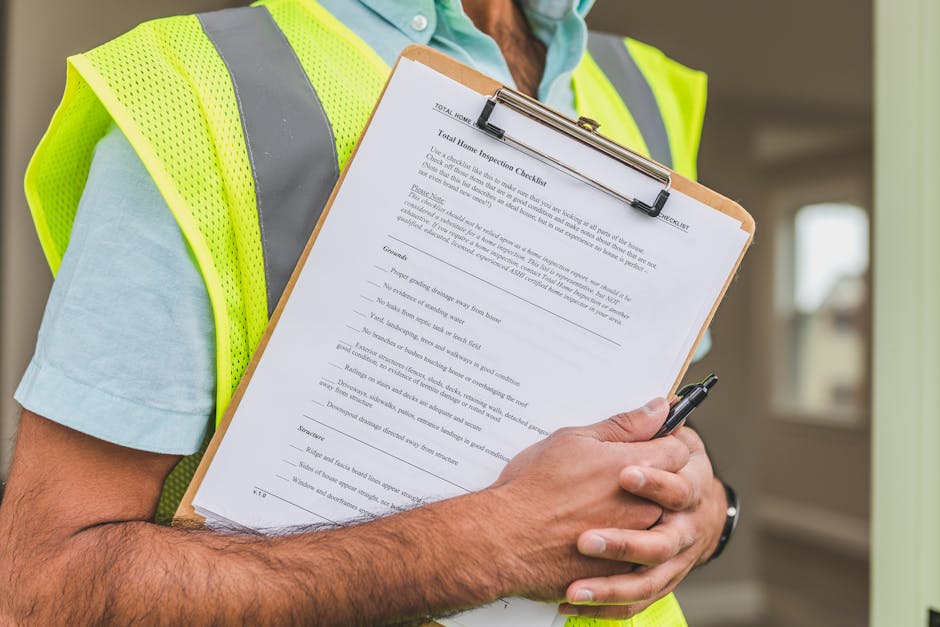
Regular maintenance is key to:
While you can handle basic tasks like cleaning filters, we strongly recommend a professional annual inspection. Our technicians perform a thorough service, including cleaning the heat exchange core, checking electrical connections, and calibrating all controls to keep your system in top shape.
When your hrv systems broken in berwick ns need professional attention, choosing the right service provider makes all the difference. You need a team that understands the Annapolis Valley climate and has the expertise to restore your home's comfort efficiently.
When searching for help, look for these key qualities:
Before you commit to a repair service, a conversation with the technician can help you feel confident in your decision. Here are a few key questions to ask:
Asking these questions helps you gauge a company's technical competence and commitment to customer satisfaction. When your hrv systems broken in berwick ns need expert care, you deserve a provider who treats your home with respect.
Your HRV system works quietly in the background every day, ensuring your Berwick home stays fresh, comfortable, and healthy. When it's functioning properly, you barely notice it—but when something goes wrong, the effects are impossible to ignore. From stuffy rooms and foggy windows to musty smells and rising energy bills, a malfunctioning HRV quickly reminds you just how vital this system is to your daily comfort.
Throughout this guide, we've walked through the key signs that your hrv systems broken in berwick ns need attention, explored common problems and simple fixes you can try yourself, and identified when it's time to bring in professional help. We've also highlighted why HRVs are absolutely essential for our unique Nova Scotia climate—managing excess humidity during cold, damp winters, preventing mold growth, and recovering precious heat to keep your energy costs down.
The truth is, regular maintenance and prompt attention to issues can make all the difference. A well-cared-for HRV doesn't just last longer—it performs better, keeps your indoor air cleaner, and saves you money month after month. When problems do arise, having a trusted, experienced team on your side ensures you get back to breathing easy as quickly as possible.
At Presidential Ventilation Systems Ltd., we've spent over 30 years helping families across the Annapolis Valley—from Berwick and Kentville to Halifax, Dartmouth, and Bedford—maintain healthy, comfortable homes. As a leading Daikin Comfort Pro Dealer, our technicians receive continuous training and bring the highest level of expertise to every service call. We understand the local climate, we know HRV systems inside and out, and we're committed to delivering exceptional service every time.
Whether your system needs a simple repair, thorough maintenance, or a complete replacement, we're here to help. Don't let a broken HRV compromise your family's comfort or health. For expert diagnosis and repair of your HRV Systems, contact our team today. We'll restore fresh air and comfort to your Annapolis Valley home, fast.